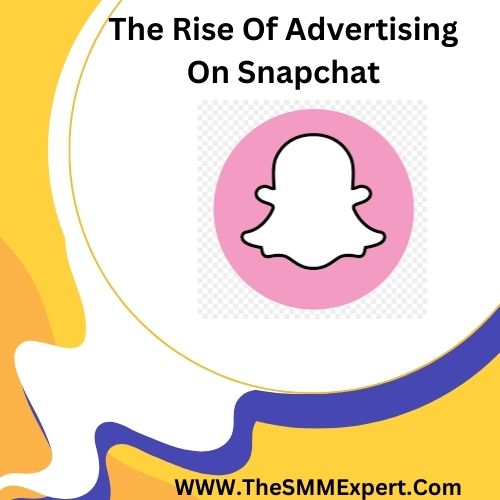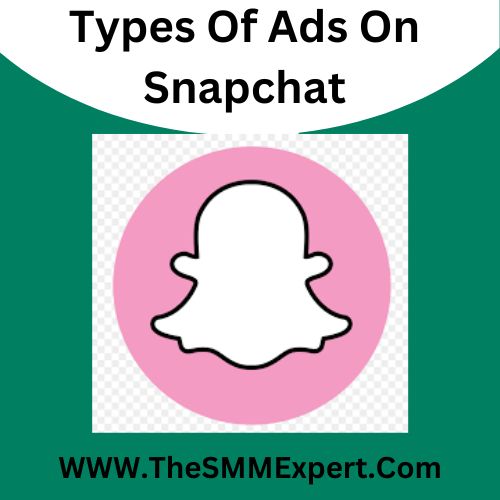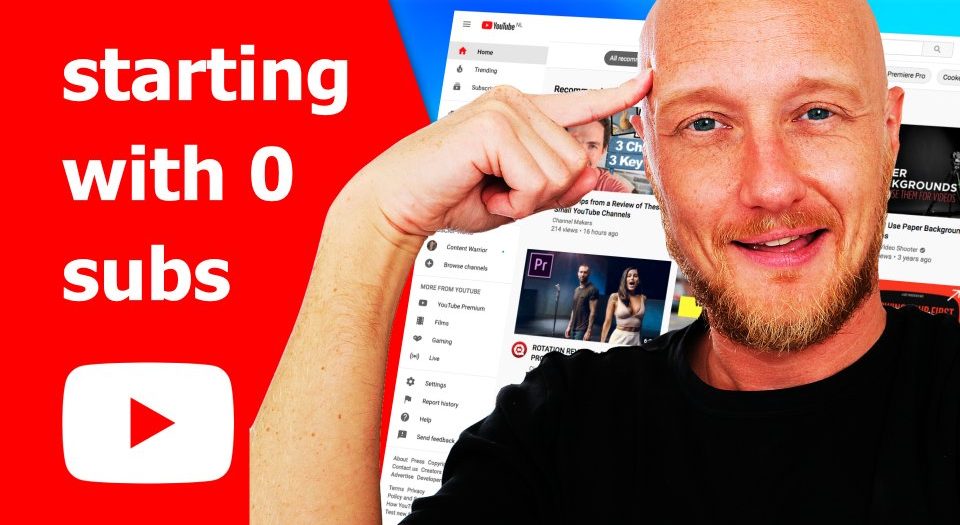Snapchat has many ads because it is a popular platform for businesses and advertisers to promote their products and services to its large user base.
The Rise Of Advertising On Snapchat
Introduction To The Increasing Number Of Ads On Snapchat
Over the years, Snapchat has become a popular platform for users to share photos and videos with their friends and followers. However, one thing that users have noticed is the increasing number of ads that dominate the platform. Whether you’re swiping through Stories or exploring new filters, it’s hard to escape the barrage of advertisements that Snapchat now presents.
The Evolution Of Snapchat’s Advertising Platform
Snapchat’s journey from a simple photo-sharing app to an advertising powerhouse has been a remarkable one. The company recognized the potential of monetizing its growing user base and introduced various advertising options for businesses. One of the key milestones in this evolution was the introduction of “Quick Ads.”
Quick Ads are part of Snapchat’s advertising platform, allowing businesses and advertisers to promote their products or services on the platform. These ads are typically short, engaging, and designed to catch the attention of users as they scroll through their feeds. With their unique vertical format and creative capabilities, Quick Ads have proven to be an effective way for businesses to reach the Snapchat audience.
Statistics On The Growth Of Snapchat’s Ad Revenue
| Year | Ad Revenue (in billions) |
|---|---|
| 2016 | 0.4 |
| 2017 | 0.7 |
| 2018 | 1.2 |
| 2019 | 1.8 |
| 2020 | 2.5 |
As the table above shows, Snapchat’s ad revenue has been steadily increasing over the years. In 2016, the company generated $0.4 billion from advertising, and by 2020, that number had grown to $2.5 billion. These statistics highlight the growing importance of advertising on Snapchat and the company’s success in attracting businesses to its platform.
The rise of advertising on Snapchat can be attributed to several factors. Firstly, the platform’s large user base provides businesses with a wide audience to target. Secondly, Snapchat’s unique features, such as AR filters and Stories, offer creative opportunities for brands to engage with users. Lastly, the rise of influencer marketing has also contributed to the increase in ads, as businesses capitalize on the popularity of Snapchat influencers to promote their products.
In conclusion, the increasing number of ads we see on Snapchat is a result of the platform’s evolution into an advertising powerhouse. With its growing ad revenue and innovative advertising options, Snapchat continues to provide businesses with a valuable platform to reach their target audience.
Factors Driving Snapchat’s Ad Strategy
The Monetization Pressure On Social Media Platforms
The rise of social media platforms has created a competitive landscape for attracting users and advertisers. However, to sustain their operations and continue innovating, these platforms need a reliable source of revenue. This has led to a growing pressure to monetize their user base through advertisements. Snapchat is no exception to this trend. As a popular social media platform with millions of active users, it faces significant monetization pressure.
By incorporating ads into its user experience, Snapchat can generate revenue and fund its ongoing operations. This monetization model allows Snapchat to offer its services for free to users while creating value for advertisers.
Snapchat’s Competitive Landscape And The Need To Stay Relevant
In an ever-evolving social media landscape, platforms need to stay relevant and competitive to retain their user base. Snapchat faces fierce competition from other platforms such as Instagram, Facebook, and TikTok, all vying for users’ attention. To maintain its position and attract advertisers, Snapchat needs to continuously innovate and offer unique advertising opportunities.
By integrating ads into its platform, Snapchat can create a win-win scenario for both users and advertisers. The platform can provide engaging and relevant content to users while allowing advertisers to reach a highly targeted and engaged audience. This strategy not only helps Snapchat to differentiate itself but also enables it to stay relevant in a competitive market.
The Demand From Advertisers For Targeted And Engaging Ads
Advertisers have shifted their focus to digital advertising due to its ability to target specific audiences and measure campaign effectiveness. With Snapchat’s extensive user data and engagement metrics, advertisers have a compelling reason to choose Snapchat as their advertising platform. Snapchat’s ad strategy focuses on delivering targeted and engaging ads to its users.
Through features such as Snap Ads, brands can create immersive ad experiences that seamlessly integrate with users’ content. This ensures that the ads are not disruptive but instead provide value to the users. By meeting the demand for targeted and engaging ads, Snapchat can attract and retain advertisers, driving its ad strategy.
Overall, the factors driving Snapchat’s ad strategy can be attributed to the monetization pressure on social media platforms, the competitive landscape, and the demand from advertisers for targeted and engaging ads. By understanding and adapting to these factors, Snapchat can continue to grow its advertising revenue while providing a positive user experience.
Types Of Ads On Snapchat
When it comes to advertising, Snapchat has a variety of options for businesses and advertisers to effectively reach their target audience. Understanding the different types of ads available on Snapchat can help marketers create engaging and impactful campaigns. In this section, we will take a closer look at the primary ad formats on Snapchat and how they allow brands to leverage the platform’s unique features.
Snap Ads: A Closer Look At Snapchat’s Primary Ad Format
Snap Ads are the cornerstone of Snapchat’s advertising platform. These ads are full-screen vertical videos that appear between Stories or in the Discover section. They allow brands to showcase their products or services in a visually appealing and immersive format. Snap Ads are designed to be engaging, captivating the attention of Snapchat users with their vertical video format. Marketers can include interactive elements like swipe-up capabilities to drive users to a website, app, or extended content within the ad itself.
Sponsored Lenses: The Use Of Augmented Reality In Advertising
Snapchat is well-known for its innovative use of augmented reality (AR), and Sponsored Lenses take advantage of this technology for advertising purposes. These lenses allow brands to create interactive and immersive experiences for Snapchat users. With Sponsored Lenses, brands can create customized filters that overlay on a user’s face or the surrounding environment.
These lenses are highly engaging and can go viral, generating a significant amount of user-generated content. By incorporating branding elements and interactive elements, such as animations or games, into Sponsored Lenses, brands can effectively increase brand awareness and engagement with their target audience.
Sponsored Geofilters: Leveraging Location-based Marketing
Snapchat’s Sponsored Geofilters allow businesses to leverage the platform’s location-based marketing capabilities. These filters are customized graphics or overlays that users can add to their snaps based on their location. Brands can create their unique geofilters to promote events, locations, or special offers. Businesses can utilize Sponsored Geofilters to increase brand visibility and engage with a targeted audience in a specific location. By creating visually appealing and relevant filters, companies can effectively showcase their brand to users in that area. The snapchat filter display reasons can vary, from promoting a new store opening to highlighting a limited-time promotion, giving businesses a unique opportunity to capture the attention of potential customers in real-time.
By targeting specific geographical areas, businesses can effectively reach their local audience and drive traffic to their physical stores or events. Sponsored Geofilters are a great way for brands to increase brand visibility and engage with Snapchat users in a fun and interactive way.
Story Ads: Capitalizing On The Popularity Of Snapchat Stories
Snapchat Stories have become immensely popular among users, and brands can now capitalize on this popularity with Story Ads. These ads seamlessly appear within the Stories feed, allowing brands to tell their own stories creatively and compellingly. Story Ads can be a series of images or videos that users can swipe through, providing an immersive brand experience. With features like interactive elements and swipe-up capabilities, marketers can effectively drive traffic to their websites, apps, or other desired destinations.
In conclusion, Snapchat offers a range of ad formats that allow businesses to creatively engage with their target audience. Whether it’s through Snap Ads, Sponsored Lenses, Sponsored Geofilters, or Story Ads, brands can leverage the unique features of the platform to create impactful advertising campaigns and increase brand visibility.
User Feedback And Reaction To Ads On Snapchat
As one of the pioneers of the disappearing content trend, Snapchat has become immensely popular over the years. However, this rise in popularity has also led to an increase in the number of ads shown on the platform. User feedback and reactions to these ads have been mixed, with some praising the relevance and creativity of the ads, while others find them intrusive and disruptive to the user experience. In this section, we will explore the impact of ads on the user experience, user perception of ad frequency and relevance, as well as the strategies employed by Snapchat to address user concerns.
The Impact Of Ads On The User Experience
The introduction of ads on Snapchat has undoubtedly had an impact on the user experience. While some users are accepting ads as a necessary means for the platform to generate revenue, others feel that the increased ad presence takes away from the original purpose of the app – to connect and share content with friends. The sudden interruption and forced engagement with ads can disrupt the flow of user interaction and cause frustration.
Moreover, the placement and duration of ads also play a significant role in the overall user experience. Ads that are placed between stories or are unskippable can be seen as intrusive, leading to a negative perception of the platform. On the other hand, ads that seamlessly integrate into the user experience and provide value or entertainment are more likely to receive positive feedback from users.
User Perception Of Ad Frequency And Relevance
One of the main concerns raised by Snapchat users is the frequency of ads displayed on the platform. Users have reported feeling overwhelmed by the sheer number of ads shown, which can create a cluttered and distracting experience. When ads appear too frequently, users may feel that they are spending more time viewing ads than engaging with their friends’ content. This perception of excessive ad frequency can lead to a decline in user satisfaction and potentially drive users away from the app.
In addition to ad frequency, the relevancy of ads is another factor that impacts user perception. Users are more likely to respond positively to ads that align with their interests and preferences, as they are seen as informative or useful rather than intrusive. Snapchat’s algorithmic targeting aims to address this concern by delivering ads that are tailored to each user’s profile and behavior. However, striking the right balance between relevance and privacy is crucial to maintain user trust and satisfaction.
Strategies Employed By Snapchat To Address User Concerns
To address user concerns and maintain a positive user experience, Snapchat has implemented several strategies. One such strategy is the introduction of less disruptive ad formats, such as non-intrusive interstitial ads and sponsored lenses or filters that users can voluntarily engage with.
Snapchat also allows users to provide feedback on ads through its ad preferences settings. By giving users control over the type of ads they see, the platform aims to enhance the relevance and personalization of ads, thereby improving the overall user experience. In addition, Snapchat has been investing in machine learning technologies to improve ad targeting and ensure that users are shown ads that are more likely to resonate with them.
By listening to user feedback, implementing less intrusive ad formats, and improving ad targeting, Snapchat strives to strike a balance between monetization and user satisfaction. These efforts demonstrate Snapchat’s commitment to maintaining a positive user experience while still leveraging ads as a source of revenue.
The Future Of Advertising On Snapchat
Snapchat’s Plans For Further Ad Innovations
Snapchat, the popular social media platform known for its disappearing content, has become one of the go-to platforms for advertisers. With millions of active users, Snapchat has paved the way for innovative and engaging advertising experiences. Looking ahead, Snapchat has big plans for further ad innovations that will captivate users and provide businesses with even more opportunities to reach their target audience. One of the areas Snapchat is focusing on is augmented reality (AR) advertising.
AR has already made a splash on Snapchat with the introduction of filters and lenses, allowing users to transform their faces and surroundings in fun and interactive ways. Snapchat plans to take AR advertising to the next level by offering more immersive experiences for users. This could include branded AR games, virtual try-ons, or even interactive storytelling. By blending the virtual and real world, Snapchat aims to create memorable and shareable ads that users will embrace.
Potential Challenges And Opportunities For Snapchat’s Ad Strategy
While Snapchat’s ad innovations present exciting possibilities, some potential challenges and opportunities come along with them. One challenge Snapchat faces is the balancing act between delivering ads that are engaging and not intrusive. Users are drawn to Snapchat for its authentic and uncluttered user experience, and bombarding them with too many ads could drive them away.
Snapchat will need to strike the right balance to maintain user satisfaction while still providing value to advertisers. On the other hand, Snapchat’s ad strategy opens up opportunities for businesses to connect with their target audience in unique ways. The platform’s focus on vertical video ads, which seamlessly fit into the immersive user experience, allows businesses to tell their story in a visually compelling way.
Additionally, Snapchat’s user demographics skew towards a younger audience, offering advertisers a prime opportunity to reach millennials and Gen Z users who are notoriously difficult to engage through traditional advertising channels.
The Role Of User Feedback In Shaping The Future Of Ads On Snapchat
User feedback plays a crucial role in shaping the future of ads on Snapchat. The platform understands the importance of listening to its users and consistently strives to improve the ad experience based on their feedback. Snapchat has implemented features like opt-out preferences for users who wish to have a more ad-free experience.
By taking user feedback into account, Snapchat ensures that ads are relevant, non-intrusive, and aligned with user preferences. Snapchat’s commitment to user feedback extends beyond just ad preferences. The platform actively seeks out user opinions when developing new ad formats or features, ensuring that users have a say in what ads they see and how they interact with them.
This user-centric approach not only fosters a positive user experience but also creates a more targeted and effective advertising platform for businesses. In conclusion, Snapchat’s future advertising plans are centered around further ad innovations, including augmented reality experiences.
While there may be challenges to overcome, such as balancing ad frequency and user experience, there are also opportunities for businesses to connect with a younger audience in unique ways. Snapchat’s dedication to incorporating user feedback ensures that ads on the platform remain relevant and non-intrusive, enhancing the overall user experience.

Credit: whnt.com
Frequently Asked Questions For Why Does Snapchat Have So Many Ads
How Do You Get Rid Of Ads On Snapchat?
To get rid of ads on Snapchat, follow these steps: 1. Open Snapchat and tap the ⚙️ button in the Profile screen. 2. Scroll to ‘Features’ and tap ‘Ads’. 3. Tap ‘Ad Preferences’. 4. Uncheck ‘Third-Party Ad Networks’ to opt-out.
Note: Snapchat Plus does not remove ads, you’ll still see them.
Does Snapchat ++ Get Rid Of Ads?
No, Snapchat ++ does not get rid of ads. You will still see ads on Snapchat even if you use Snapchat ++.
What Are Unskippable Ads On Snapchat?
Unskippable ads on Snapchat are ads that users cannot skip and are typically created by businesses and advertisers to promote their products or services. These ads are part of Snapchat’s advertising platform and offer various advertising options to businesses. Users may encounter unskippable ads while using the app.
How Much Does Snapchat Make From Ads?
Snapchat generates significant revenue from ads, but the exact amount is not publicly disclosed.
Conclusion
Snapchat has a significant number of ads due to its advertising platform that allows businesses and advertisers to promote their products and services on the app. These ads are based on users’ interests and the content they engage with outside of the app.
While some users may find the ads annoying, Snapchat provides options to adjust advertising preferences. Despite the abundance of ads, Snapchat remains a popular platform for connecting with friends and sharing content.









Write a comment
Your email address will not be published. All fields are required